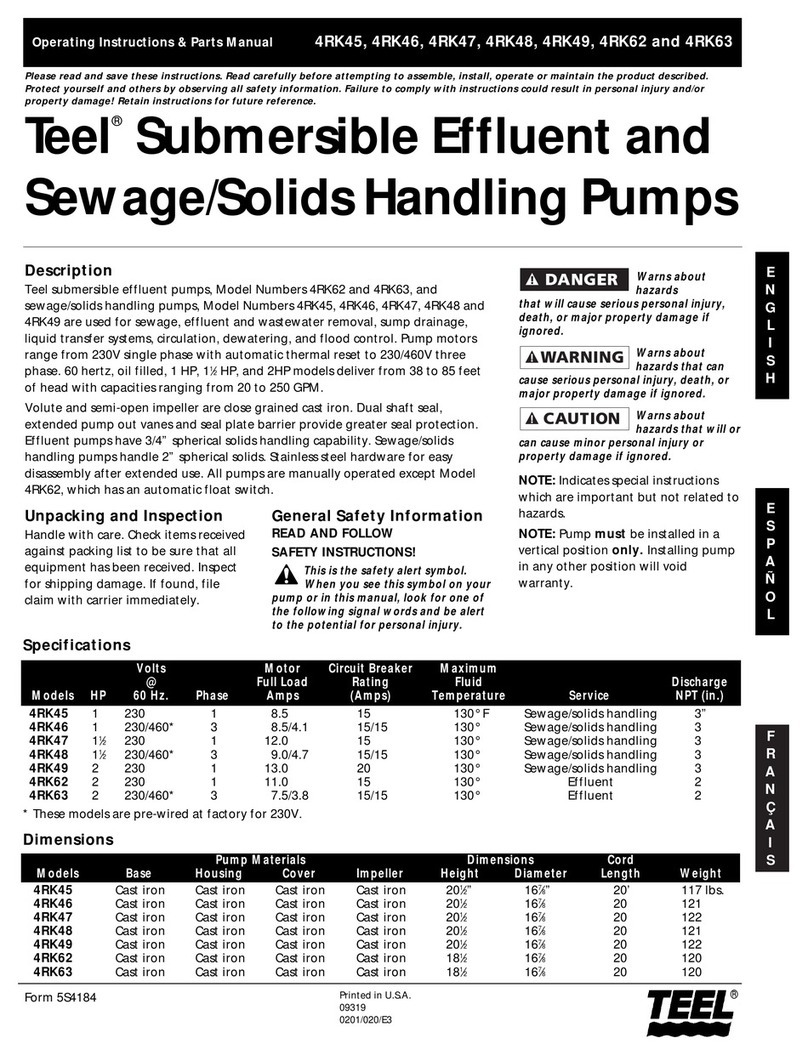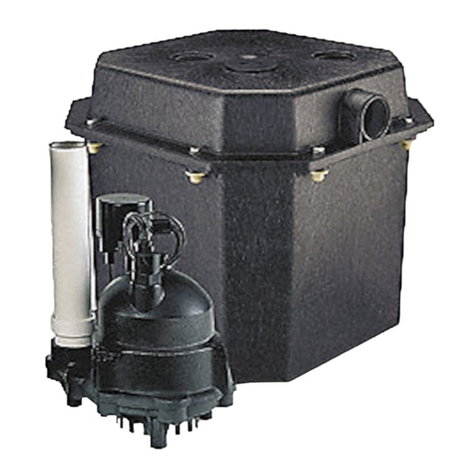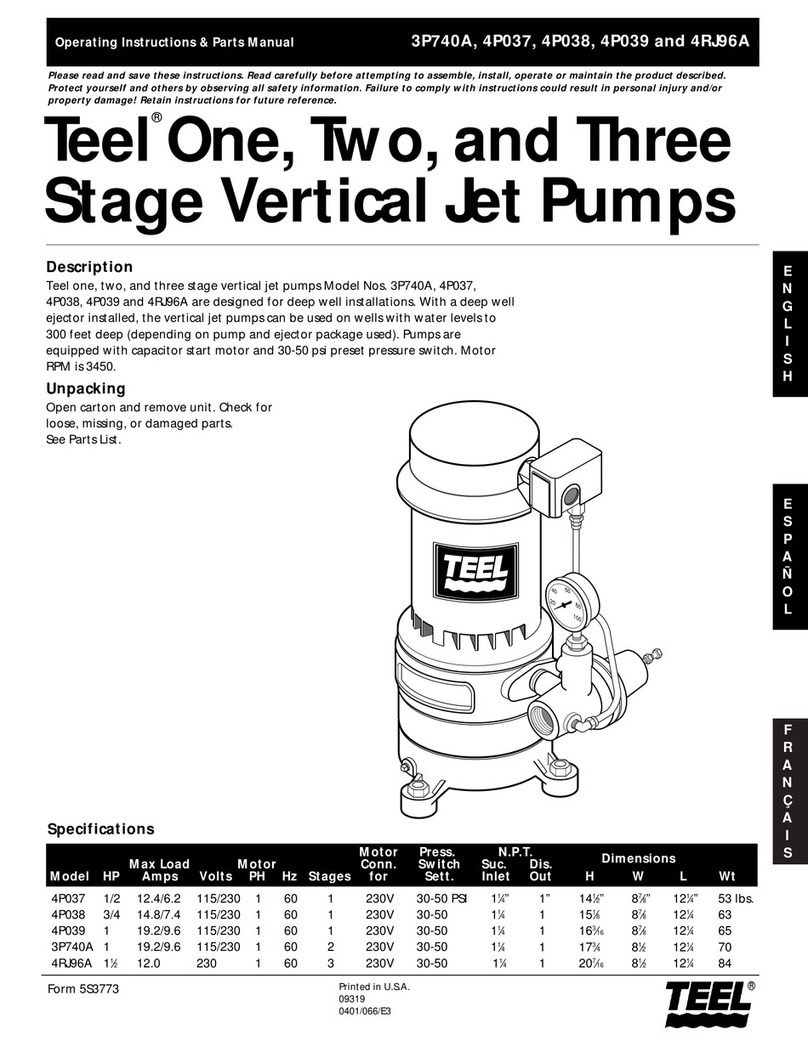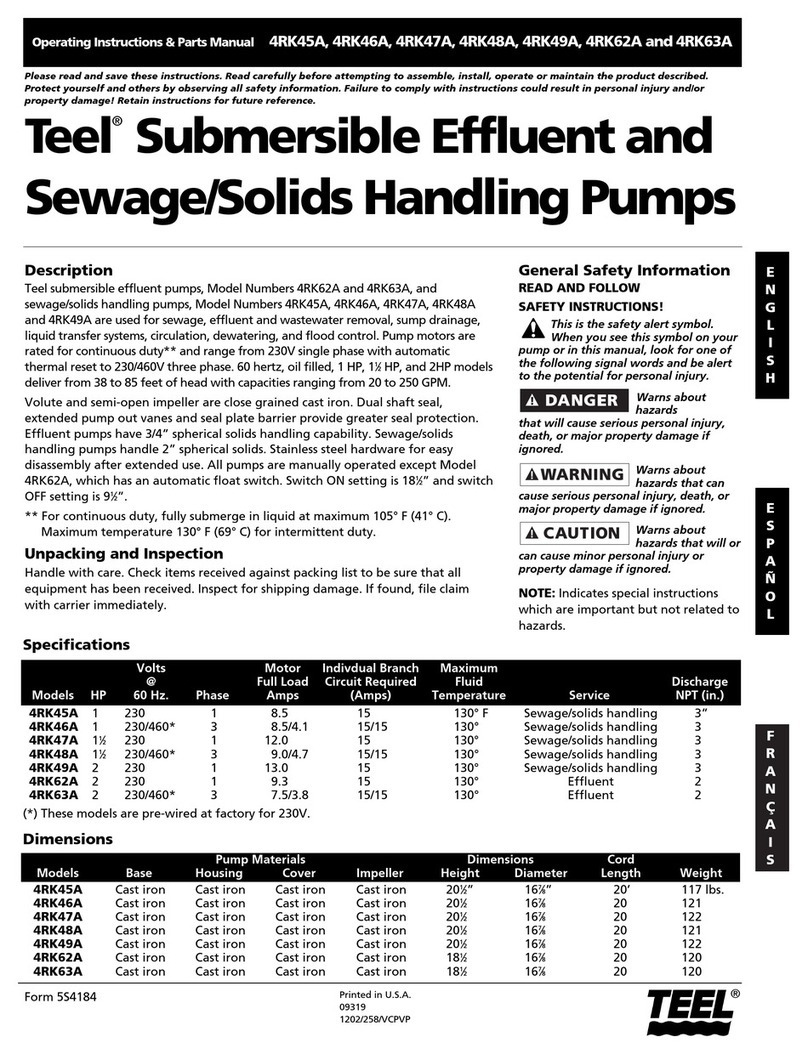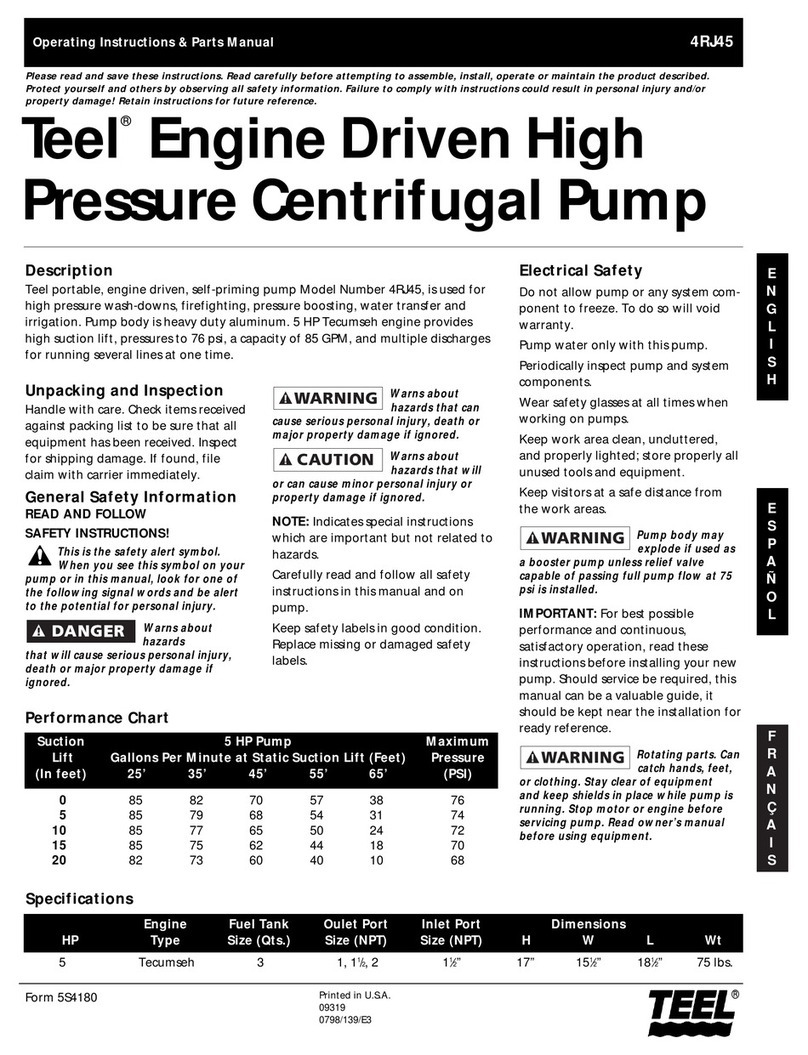2
Teel Operating Instructions and Parts Manual 4RJ40, 4RJ41, 4RJ42, 4RJ43 and 4RJ44
Teel Professional Self-Priming
Centrifugal Pump
®
E
N
G
L
I
S
H
General Safety Information
(Continued)
Keep safety labels in good condition.
Replace missing or damaged safety
labels.
Make workshops childproof; use
padlocks and master switches; remove
starter keys.
ELECTRICAL SAFETY
Hazardous voltage.
Can shock, burn, or
cause death. Ground pump before
connecting to power supply. Disconnect
power before working on pump, motor,
or tank.
Wire motor for correct voltage. See
“Electrical” section of this manual,
motor nameplate, and diagram inside
motor junction box cover.
Ground motor before connecting
to power supply.
Meet United States National
Electrical Code, Canadian Electrical
Code, and local codes for all wiring.
Follow wiring instructions in this
manual and in motor junction box
when connecting motor to power lines.
GENERAL SAFETY Hazardous
pressure! Do not
run pump against closed discharge.
Release all pressure on system before
working on any component.
Do not touch an
operating motor.
Modern motors are designed to operate
at high temperatures. To avoid burns
when servicing pump, allow it to cool for
20 minutes after shut-down before
handling.
To avoid heat build-up, over-pressure
hazard and possible injury, do not use
in a domestic water system. Do not use
as a booster pump; pressurized suction
may cause pump body to explode.
Never run pump above recommended
pressure shown on the performance
chart.
Do not allow pump or any system
component to freeze. Freezing pump
will void warranty.
Pump should only be used to pump
liquids compatible with pump
component materials.
Periodically inspect pump and system
components.
Keep work area clean, uncluttered,
and properly lighted; properly store all
unused tools and equipment.
Keep visitors at a safe distance from
the work areas.
Make workshop childproof with
padlocks, master switches, and by
removing starter keys.
Know the pump application,
limitations, and potential hazards.
Installation Risk of fire and
explosion. Do not
use this pump to pump flammable or
explosive fluids such as gasoline, fuel oil,
kerosene, etc. Do not use in flammable
or explosive atmospheres. Pump should
only be used with liquids compatible
with pump component materials. Failure
to follow this warning can result in
personal injury and/or property damage.
Make certain that the power source
conforms to the requirements of your
equipment.
Provide adequate protection and
guarding around moving parts.
Disconnect power before servicing.
Release all pressure within the system
before servicing any component.
Drain all liquids from the system
before servicing.
Secure the discharge line before
starting the pump. An unsecured
discharge line will whip, possibly
causing personal injury and/or
property damage.
Check hoses for weak or worn
condition before each use, making
certain that all connections are secure.
Provide a means of pressure relief for
pumps whose discharge line can be
shut or obstructed.
Performance Chart*
49 44 43 40 55 49 48 45 67 61 56 46 69 67 65 62 59 92 83 81 78 64
46 41 40 39 51 46 45 44 66 58 55 45 64 62 60 57 54 86 80 78 76 62
40 38 35 33 45 42 39 37 61 56 54 44 59 56 54 52 49 80 76 75 74 59
34 31 29 26 38 35 32 29 55 52 51 43 53 50 48 46 43 73 71 70 68 57
28 25 22 18 31 28 24 20 48 45 44 37 47 45 42 40 37 66 66 65 64 55
15 12 7 – 23 19 16 11 39 37 34 28 40 38 35 32 28 61 60 59 58 52
– – – – 17 13 8 – 33 27 20 11 34 30 27 23 19 55 54 53 52 50
– – – – – – – – 18 14 8 – 24 18 13 10 – 48 46 45 44 42
– – – – – – – – – – – – 14 7 – – – 40 38 37 36 34
Discharge Gallons Per Minute at Discharge Pressure (psi)
Pressure 4RJ44 4RJ41 4RJ42 4RJ43 4RJ40
5’ 10’ 15’ 20’ 5’ 10’ 15’ 20’ 5’ 10’ 15’ 20’ 5’ 10’ 15’ 20’ 25’ 5’ 10’ 15’ 20’ 25’
PSI
10
15
20
25
30
35
40
45
50
(*) Performance listed at 68° F (20° C), specific gravity 1.0.













